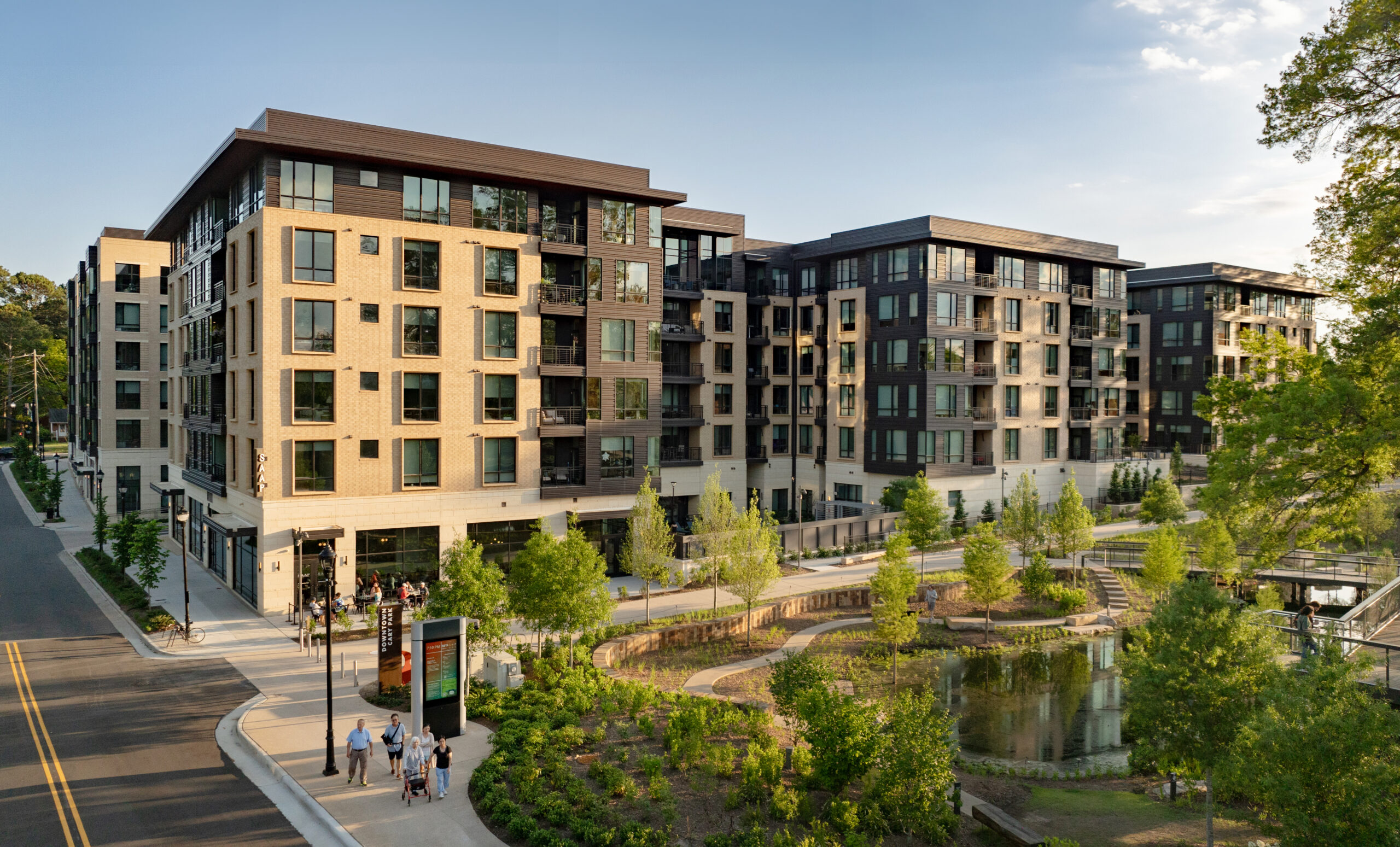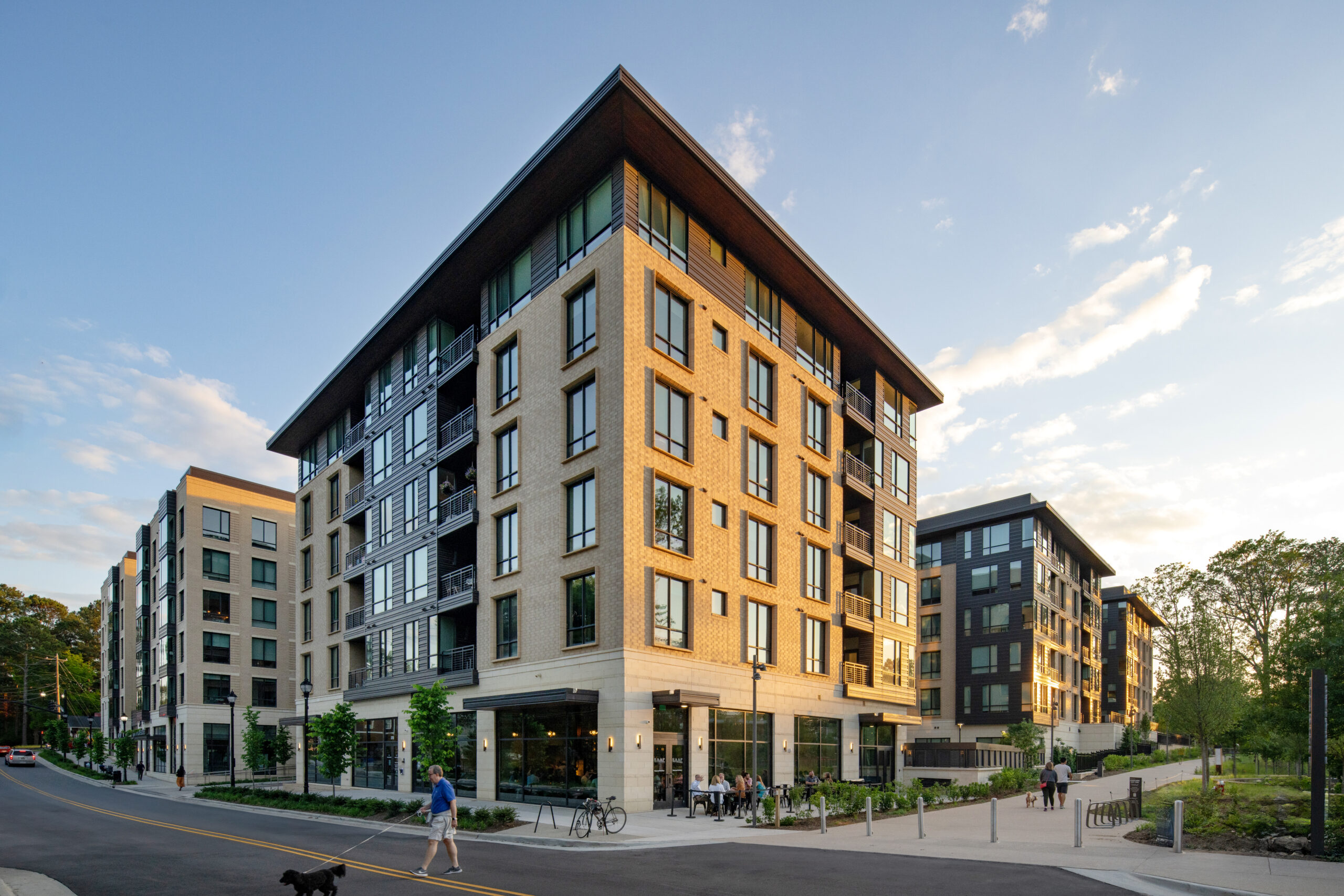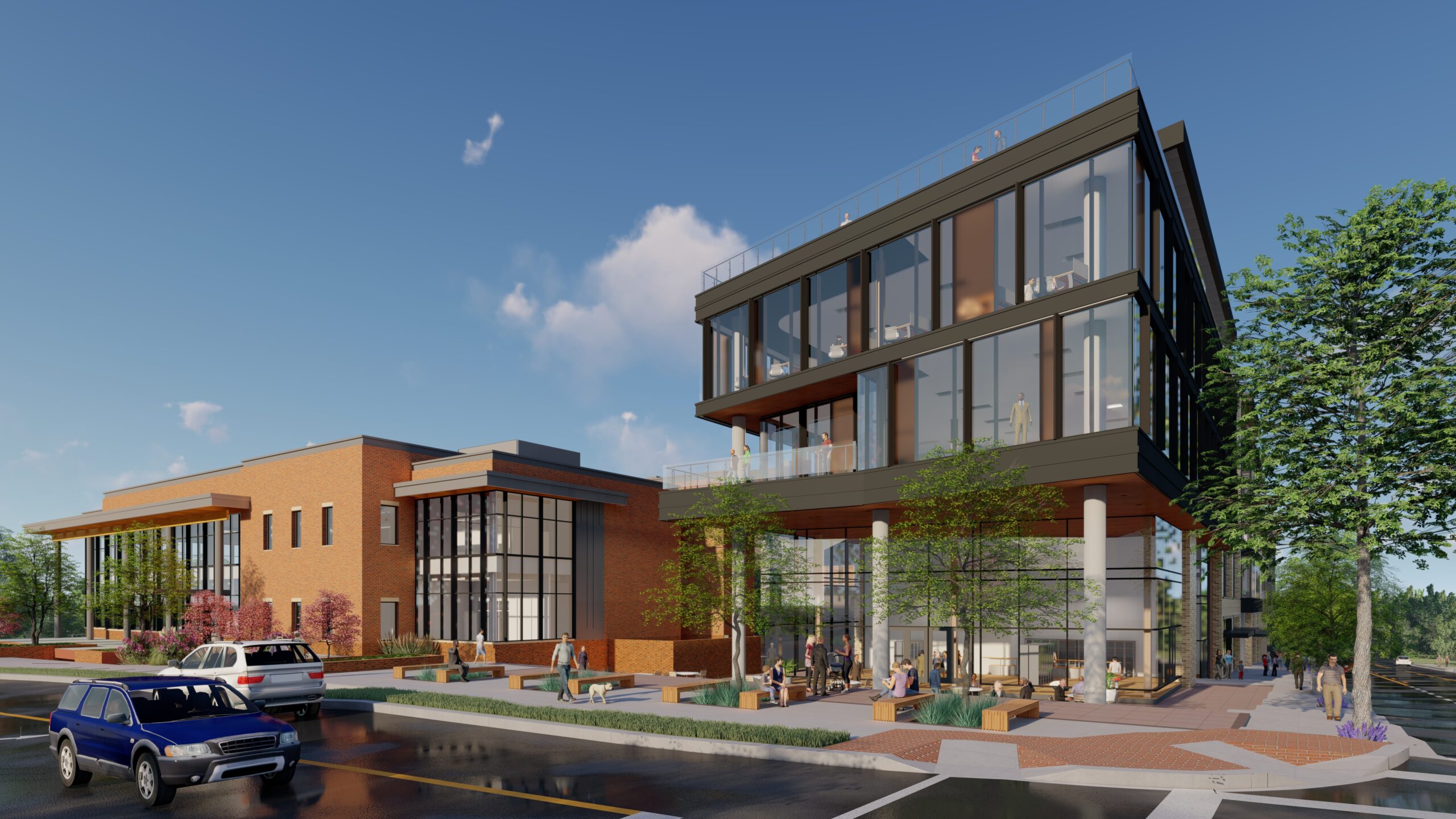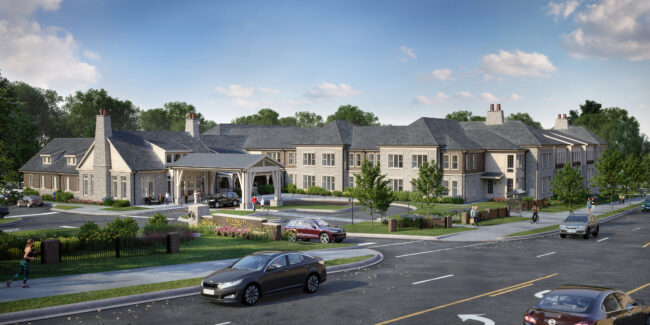
The Walker
Triangle Real Estate Company
Architecture, Landscape Architecture, Planning
152 units
34,000 sf retail
102,000 sf office building
2023 (Phase 1)
Residential – Type I + II
Office/Commercial – Type I
Reshaping Downtown Cary's Blueprint.
Cary, NC
The vision for The Walker’s mixed-use development was to create a gem in downtown Cary, North Carolina that was an integral part of the growth and expansion of the town’s core. As one of the first developments with increased density in Cary’s town center, it was crucial that the project met the high design standards set by its surrounding neighbors. The project drew inspiration from the nearby Cary Arts Center, Cary Regional Library, and the surrounding single-family neighborhoods. The residential component of the project fills a gap in Cary’s downtown housing market, and the shared structured parking deck with the neighboring library and community park fosters connectivity within the larger neighborhood. As the catalyst for planned growth in downtown Cary, The Walker provides opportunities for people to live, work, and thrive in a vibrant, urban environment.

Collaboration with the town.
The Walker presented numerous design opportunities resulting from collaboration between the town and the developer leading to additional building height allowances. Scale change was a critical consideration, especially due to the proximity of single-family homes. The project’s long L-shaped site provided an opportunity to transition architectural languages along the building facades, effectively reducing the perceived mass of the development.



Office slated for the future.
The office building, slated for the second phase of development, embraces a contemporary design with large glass and metal elements juxtaposed against a traditional masonry framework. As the development progresses along Walnut Street, it seamlessly transitions into residential units above street-level retail spaces. The retail edge remains consistent along the sidewalk, while the residential units incorporate a series of small courts, breaking up the building mass and creating the impression of smaller structures.


